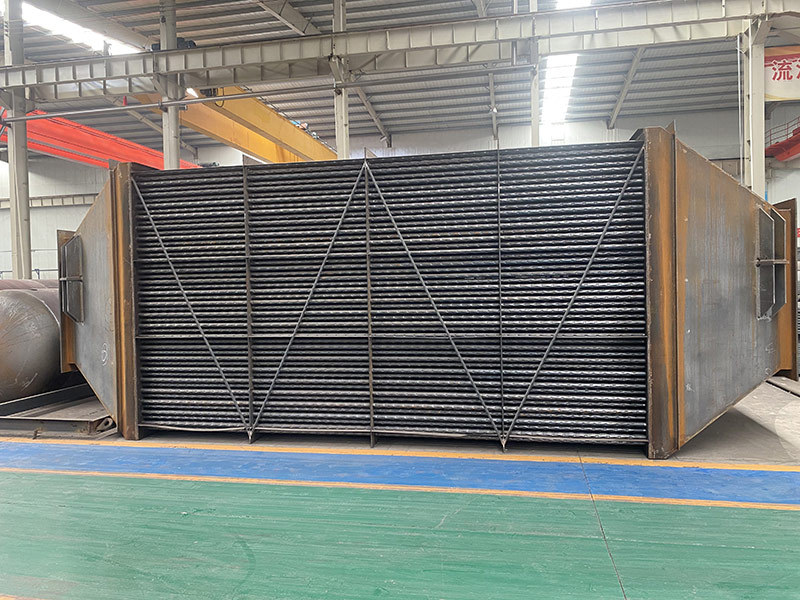
Our News
Find out about our latest news here.
Latest News
- ▶ Large Shell and Tube Condenser for Power and Process Industries
- ▶ Shell and Tube Heat Exchanger Cost Estimate: A Complete Guide for Buyers
- ▶ Iraqi Client Visited Boyu Industry for Technical Inspection of Condensers and Process Columns
- ▶ Shell and Tube Heat Exchanger Manufacturers: Key Factors for Choosing the Right Supplier
- ▶ Applications of Shell & Tube Heat Exchangers in MEG Packages (Monoethylene Glycol Systems)
- ▶ High-Efficiency Surface Condenser Solutions:
Message
1. Overview
A Furnace Secondary Heat Exchanger, also known as a waste heat recovery exchanger or flue gas secondary heat exchanger, is a key component in modern industrial heating systems.
It is designed to recover residual heat energy from high-temperature flue gas leaving the furnace, improving overall thermal efficiency and reducing fuel consumption.
In industrial furnaces, boilers, and thermal oil heaters, a large amount of heat is carried away by exhaust gas. Installing a secondary heat exchanger at the furnace outlet or flue duct allows this waste heat to be reused to preheat air, water, or process fluids—achieving both energy savings and emission reduction.
2. Working Principle
The secondary heat exchanger is usually located after the primary heat exchanger (the main radiant or convection heating zone of the furnace).
When the high-temperature flue gas exits the main heating section, it still contains a considerable amount of recoverable energy. As the gas passes through the secondary exchanger—where it contacts tubes or plates carrying a cold medium (air, feedwater, or thermal oil)—heat is transferred through the walls:
The flue gas temperature decreases, reducing energy loss;
The medium temperature increases, achieving preheating or process heating;
The overall system efficiency improves, often from around 70% to more than 90%.
Depending on the heat recovery medium, the unit may function as an Air Preheater, Economizer, or Recuperator.

3. Common Structural Types
Furnace secondary heat exchangers can be designed in various forms to meet specific process requirements:
Shell and Tube Type
Mature and reliable structure, suitable for high temperature and pressure conditions;
Flue gas flows on the shell side, while water or air flows inside the tubes;
Commonly used in boiler economizers and flue gas hot-water recovery systems.
Finned Tube Type
Extended surface area increases heat transfer efficiency;
Ideal for air preheating and waste heat recovery from combustion gases.
Plate Type
Compact design with high heat transfer coefficient;
Suitable for low-pressure, clean fluid applications.
4. Materials and Design Standards
The selection of material depends on the gas composition, temperature, and pressure conditions.
Typical materials include:
Carbon steel: SA-179, SA-192, Q345R — for medium-temperature flue gas;
Stainless steel: 304, 316L, 310S — for corrosive or high-temperature service;
Alloy steel: SA-213 T11, T22 — for high-pressure and high-temperature use.
Design and fabrication are commonly based on standards such as ASME Section VIII, TEMA, API 560, and NB/T 47015-2011, ensuring safety and long-term reliability under demanding conditions.
5. Industrial Applications
Furnace secondary heat exchangers are widely used across multiple industries:
Metallurgy: Heat recovery from blast furnaces, coke ovens, and reheating furnaces;
Petrochemical: Waste heat recovery from refinery furnaces and cracking furnaces;
Power generation: Boiler economizers and air preheaters;
Chemical industry: Thermal oil heaters and process gas exchangers.
For example, in a coking plant’s flue gas system, the secondary heat exchanger can heat water up to 110 °C or preheat combustion air, saving thousands of tons of fuel annually and generating significant economic and environmental benefits.
6. Energy-Saving and Environmental Benefits
Installing a furnace secondary heat exchanger provides substantial advantages:
Energy Efficiency: Reduces fuel consumption by 10–30%;
Emission Reduction: Lowers flue gas discharge temperature and heat pollution;
Equipment Protection: Decreases high-temperature corrosion on downstream components;
Sustainability: Promotes waste heat utilization and carbon reduction.
Through stepwise heat recovery and optimized system design, enterprises can achieve both economic gains and environmental compliance.
7. Conclusion
The Furnace Secondary Heat Exchanger plays a vital role in industrial waste heat utilization.
It enhances energy efficiency, minimizes fuel costs, and supports sustainable production.
Whether in new projects or retrofit upgrades, proper design and integration of a secondary heat recovery system are essential to achieving long-term economic and ecological benefits.
PROFESSIONAL CONSULTATION
If you are interested in our products and want to know more details, please leave a message here, we will reply you as soon as we can.